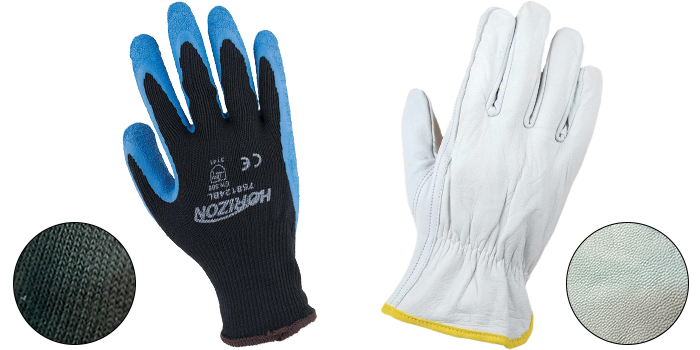Leather Gloves vs. Synthetic Gloves: Choosing the Proper Hand Protection for Industrial Applications
In various industrial applications such as construction, manufacturing, and numerous trades, hand protection is essential to ensure worker safety and productivity. When it comes to choosing gloves for general purpose use, two popular options are leather gloves and synthetic gloves. In this blog, we will compare these two types of gloves, highlighting their features, benefits, and considerations, to help you make an informed decision regarding your hand protection solution.
Material and Construction:
Leather Gloves: are commonly made from cowhide, goatskin, pigskin, or deerskin. They offer excellent durability and abrasion resistance, making them suitable for heavy-duty tasks. Leather gloves often feature reinforced stitching and additional padding in high-impact areas for enhanced protection.
Looking for more information on Leather Gloves? Check out this article for everything you need to know about leather gloves
Synthetic Gloves: on the other hand, are made with synthetic yarn or fibers such as nylon, polyester, or Kevlar. They are designed to provide specific benefits based on the type of coating they feature, which can be nitrile, latex, micro-foam nitrile, PVC, or polyurethane. Synthetic gloves are known for their lightweight nature, flexibility, and varying resistance to abrasion, cuts, chemicals, oils, and punctures
Protection and Performance
Leather Gloves: excel in providing adequate protection against abrasions, cuts, and punctures. Their thick and rugged construction makes them ideal for tasks involving rough surfaces, sharp objects, or heavy machinery. They offer good heat resistance and are less prone to melting or burning, providing an added safety advantage in certain applications.
Synthetic Gloves with specialized coatings provide excellent grip, superior dexterity, and tactile sensitivity. The coatings, such as nitrile or micro-foam nitrile, enhance the gloves' grip on wet or oily surfaces, making them suitable for tasks that involve handling slippery objects or working in greasy environments. Synthetic gloves are also available in different thicknesses, allowing for increased sensitivity or added protection as per the specific requirements of the task.
Comfort and Fit
Leather Gloves: require a break-in period to conform to the wearer's hands, providing a more comfortable fit over time. Once broken in, they offer excellent comfort and flexibility. Leather is a moderately breathable material, allowing for better airflow and reducing hand perspiration. However, leather gloves may become stiff after getting wet and take longer to dry compared to synthetic gloves.
Synthetic Gloves: are typically designed to offer a snug and comfortable fit right out of the box. They often feature elastic cuffs or adjustable closures for a secure fit and ease of use. Synthetic materials are generally more resistant to moisture, allowing the gloves to stay flexible and perform well in wet conditions. Their lightweight and breathable nature make them suitable for prolonged use without causing excessive hand fatigue.
Maintenance and Durability
Leather Gloves: require regular maintenance to ensure their longevity. They should technically be cleaned and conditioned using appropriate products to maintain their suppleness and prevent drying or cracking, although this is rarely done in industrial applications due to the rugged nature of the work application. While leather gloves have a longer lifespan compared to some synthetic gloves, their durability can be compromised when exposed to certain chemicals or excessive moisture.
Synthetic Gloves: are often favored for their low maintenance requirements. They can be easily cleaned using mild soap and water, and some can even be machine-washed. Synthetic materials are generally more resistant to chemicals and moisture, allowing them to maintain their integrity and performance over a longer period. However, certain solvents or abrasive materials may cause damage or deterioration.
Conclusion
Both leather gloves and synthetic gloves have their advantages and considerations when it comes to general purpose hand protection in industrial applications. Ultimately, the choice between the two depends on the specific requirements of the industrial application. Assessing the hazards, level of protection needed, comfort, dexterity and durability expectations will help determine the most suitable option for optimal hand safety and productivity.
Remember to always consult with industry regulations, safety guidelines, and consider the recommendations of glove manufacturers and safety specialists to ensure the right choice of hand protection is in place for your specific application.
Like the Blog and Video? Please consider sharing it with your friends and your team.






